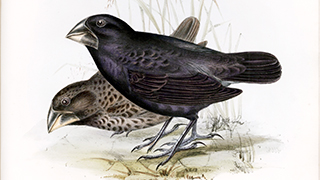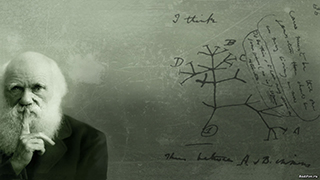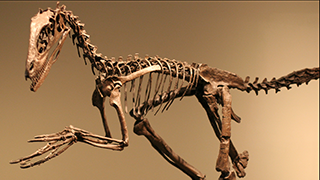Other Sites:
Robert J. Robbins is a biologist, an educator, a science administrator, a publisher, an information technologist, and an IT leader and manager who specializes in advancing biomedical knowledge and supporting education through the application of information technology. More About: RJR | OUR TEAM | OUR SERVICES | THIS WEBSITE
About RJ Robbins
Robbins has experience in biology, education, science administration, information technology, and publishing: At Michigan State, he taught biology to thousands of university students; at NSF and DOE he served as a program officer in two federal funding agencies; as Director of the Laboratory for Applied Research at Johns Hopkins, he played a key role in developing the information infrastructure of the human genome project; and at the Fred Hutchinson Cancer Research Center (FHCRC) he served as the VP/CIO of a major research organization. In 1993, he developed a free website (www.esp.org) that is still used by tens of thousands of students and educators world wide. In 2001, he co-founded and currently leads an organization (www.briite.org) that facilitates communication and cooperation among IT professionals at academic biomedical research organizations.
Currently, Robbins is working on a book-length exploration of the use of cloud computing in support of grant funded research (summary: technically, it's a great fit, financially it's a disastrously bad fit).
After retiring from FHCRC, Robbins spent several years assisting with the UCSD-hosted, NSF-funded Research Coordinating Network for the Genomic Standards Consortium project which facilitated the extension of genomic and metagenomic data standards into fields such as biodiversity and community ecology. This work convinced him that
Classical biology describes the familiar, macroscale realm of multi-cellular eukaryotic organisms, which constitute a highly derived and constrained evolutionary subset of the biosphere, unrepresentative of the vast, mostly unseen, microbial world of prokaryotic life that comprises at least half of the planet’s biomass and most of its genetic diversity. The two realms occupy fundamentally different mega-niches: eukaryotes interact primarily mechanically with the environment, prokaryotes primarily physiologically. Further, many foundational tenets of classical biology simply do not apply to prokaryotic biology.
Robbins et al. 2016. Advances in biodiversity: metagenomics and the unveiling of biological dark matter. Standards in Genomic Sciences, 11(1):69.
Robbins has previously served as Vice President for Information Technology at the Fred Hutchinson Cancer Research Center in Seattle, as Program Director for Bioinformation Infrastructure in the Office of Health and Environmental Research of the U.S. Department of Energy, and as Program Director for Database Activities in the Biological, Behavioral, and Social Sciences at the National Science Foundation. He has also been on the faculty at the Johns Hopkins University and at the Michigan State University.

Thomas Jefferson Dog, also known as TomDog, provides managerial assistance in matters pertaining to stress management and interspecies relations.
Robbins was a founding member of the National Science Foundation's Advisory Committee for Cyberinfrastructure and served six years on NSF's main advisory committee for the Biological Sciences Directorate (the BIO/AC). In 2011, he was lead reviewer for data-management issues in the thirty-year review of NSF's Long-Term Ecological Research program (report available HERE).
He holds an A.B. in Chinese History from Stanford and B.S, M.S., and Ph.D. degrees in zoology and interdisciplinary biology from Michigan State University. His current research interests include cloud computing, computer applications in biology, computational genomics and metagenomics, microbial ecology, and the management of biological knowledge. His current technical interests include photography, graphics design, (semi-automated approaches to) publishing, and eBook creation.
RJR Experience and Expertise
Researcher
Robbins holds BS, MS, and PhD degrees in the life sciences. He served as a tenured faculty member in the Zoology and Biological Science departments at Michigan State University. He is currently exploring the intersection between genomics, microbial ecology, and biodiversity — an area that promises to transform our understanding of the biosphere.
Educator
Robbins has extensive experience in college-level education: At MSU he taught introductory biology, genetics, and population genetics. At JHU, he was an instructor for a special course on biological database design. At FHCRC, he team-taught a graduate-level course on the history of genetics. At Bellevue College he taught medical informatics.
Administrator
Robbins has been involved in science administration at both the federal and the institutional levels. At NSF he was a program officer for database activities in the life sciences, at DOE he was a program officer for information infrastructure in the human genome project. At the Fred Hutchinson Cancer Research Center, he served as a vice president for fifteen years.
Technologist
Robbins has been involved with information technology since writing his first Fortran program as a college student. At NSF he was the first program officer for database activities in the life sciences. At JHU he held an appointment in the CS department and served as director of the informatics core for the Genome Data Base. At the FHCRC he was VP for Information Technology.
Publisher
While still at Michigan State, Robbins started his first publishing venture, founding a small company that addressed the short-run publishing needs of instructors in very large undergraduate classes. For more than 20 years, Robbins has been operating The Electronic Scholarly Publishing Project, a web site dedicated to the digital publishing of critical works in science, especially classical genetics.
Speaker
Robbins is well-known for his speaking abilities and is often called upon to provide keynote or plenary addresses at international meetings. For example, in July, 2012, he gave a well-received keynote address at the Global Biodiversity Informatics Congress, sponsored by GBIF and held in Copenhagen. The slides from that talk can be seen HERE.
Facilitator
Robbins is a skilled meeting facilitator. He prefers a participatory approach, with part of the meeting involving dynamic breakout groups, created by the participants in real time: (1) individuals propose breakout groups; (2) everyone signs up for one (or more) groups; (3) the groups with the most interested parties then meet, with reports from each group presented and discussed in a subsequent plenary session.
Designer
Robbins has been engaged with photography and design since the 1960s, when he worked for a professional photography laboratory. He now prefers digital photography and tools for their precision and reproducibility. He designed his first web site more than 20 years ago and he personally designed and implemented this web site. He engages in graphic design as a hobby.
RJR Picks from Around the Web (updated 11 MAY 2018 )
Old Science

Weird Science

Treating Disease with Fecal Transplantation
Fossils of miniature humans (hobbits) discovered in Indonesia
Paleontology

Dinosaur tail, complete with feathers, found preserved in amber.
Astronomy

Mysterious fast radio burst (FRB) detected in the distant universe.
Big Data & Informatics

Big Data: Buzzword or Big Deal?
Hacking the genome: Identifying anonymized human subjects using publicly available data.